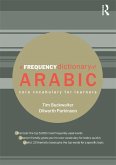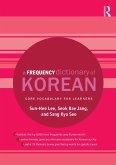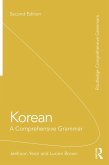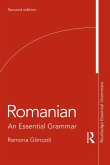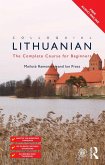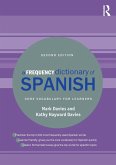A Frequency Dictionary of Contemporary Czech is an invaluable tool for all learners of Czech, providing a list of the 5,000 most frequently used words in the language.
Dieser Download kann aus rechtlichen Gründen nur mit Rechnungsadresse in A, B, BG, CY, CZ, D, DK, EW, E, FIN, F, GR, HR, H, IRL, I, LT, L, LR, M, NL, PL, P, R, S, SLO, SK ausgeliefert werden.
Linguist List 10/7/2011
As a language teacher and student, I have often found frequency-based
dictionaries to be extremely useful, and I have no doubt that this work will
prove similarly valuable for learners of Czech. As noted by the authors, the
book is also likely to be helpful for educators, including teachers of Czech as
well as individuals involved in curriculum design and materials development. The
statistical information that is presented may also be of substantial interest to
researchers.
This book is particularly welcome in light of the fact that Czech is spoken by
relatively few people (12 million or so), which has meant that learners and
teachers of the language have had access to educational resources which are far
fewer in number than those available for more widely-spoken languages. In fact,
it happens to be the case that while living in Prague and studying Czech, I
searched in vain for exactly this kind of dictionary
Overall, there is much more to praise here than to criticize. The issues I have
mentioned above are quite minor when one takes into account the obvious effort
and care that has gone into creating the main frequency-ranked word list along
with the other tools this dictionary provides. The example sentences are clear
and illustrative; learners will no doubt find it a helpful exercise to practice
translating both the vocabulary words and their example sentences from Czech to
English and vice versa. The part of speech index and the ''thematic vocabulary''
sections permit the learner to focus selectively on particular grammatical
classes or other groups of words.
In my generally favorable review of a previous entry in this dictionary series
(the one for Mandarin Chinese), I stated that despite a few weaknesses I had
noted, my main reaction upon examining the dictionary was a sense of regret that
it had not been available to me years earlier when I was first studying Chinese.
My reaction to this Czech frequency dictionary is much the same. I would have
greatly valued such a resource when first studying Czech, and believe that
future learners will find it an extremely effective learning tool. I have no
hesitation in giving this dictionary a strong positive recommendation.
Michael Grosvald earned his doctorate in Linguistics in 2009 at the University of California at Davis. His background includes over a decade as a language instructor in Prague, Berlin, Taipei and the US; his interests include the phonetics and phonology of signed and spoken languages, second language acquisition, computational linguistics, psycholinguistics and the neuroscience of language. He is currently working as a post-doctoral scholar in the Department of Neurology at the University of California, Irvine.
Linguistlist
As a language teacher and student, I have often found frequency-based
dictionaries to be extremely useful, and I have no doubt that this work will
prove similarly valuable for learners of Czech. As noted by the authors, the
book is also likely to be helpful for educators, including teachers of Czech as
well as individuals involved in curriculum design and materials development. The
statistical information that is presented may also be of substantial interest to
researchers.
This book is particularly welcome in light of the fact that Czech is spoken by
relatively few people (12 million or so), which has meant that learners and
teachers of the language have had access to educational resources which are far
fewer in number than those available for more widely-spoken languages. In fact,
it happens to be the case that while living in Prague and studying Czech, I
searched in vain for exactly this kind of dictionary
Overall, there is much more to praise here than to criticize. The issues I have
mentioned above are quite minor when one takes into account the obvious effort
and care that has gone into creating the main frequency-ranked word list along
with the other tools this dictionary provides. The example sentences are clear
and illustrative; learners will no doubt find it a helpful exercise to practice
translating both the vocabulary words and their example sentences from Czech to
English and vice versa. The part of speech index and the ''thematic vocabulary''
sections permit the learner to focus selectively on particular grammatical
classes or other groups of words.
In my generally favorable review of a previous entry in this dictionary series
(the one for Mandarin Chinese), I stated that despite a few weaknesses I had
noted, my main reaction upon examining the dictionary was a sense of regret that
it had not been available to me years earlier when I was first studying Chinese.
My reaction to this Czech frequency dictionary is much the same. I would have
greatly valued such a resource when first studying Czech, and believe that
future learners will find it an extremely effective learning tool. I have no
hesitation in giving this dictionary a strong positive recommendation.
Michael Grosvald earned his doctorate in Linguistics in 2009 at the University of California at Davis. His background includes over a decade as a language instructor in Prague, Berlin, Taipei and the US; his interests include the phonetics and phonology of signed and spoken languages, second language acquisition, computational linguistics, psycholinguistics and the neuroscience of language. He is currently working as a post-doctoral scholar in the Department of Neurology at the University of California, Irvine.
Linguistlist



